
Biography Summaries Of Great People Part-2 (Steve Jobs) THE LAST POST...
Hey Guys we the team of HELPING SURFERS INC. has come up with new series of THE SUMMARIES OF GREAT PEOPLE BIOGRAPHY.
And too we team of HS Inc. and Ayush Patil finally declares that THIS BLOG IS DEAD now onwards.
We are just here to accomplish our commitment about part 2 of this series which was pending and posting due to request of our readers. Hence this WILL BE LAST POST ON THIS BLOG. But for sake of an emotion attachment with this blog HS Inc. we have decided to keep it live on web but no new content will be available here onwards.
Thanks for your support but everything comes to an end and We are really grateful to have you all on journey of 2.5yrs of activeness on this blog i.e. 14 April 2020- Dec2022. Due to some issue we couldn't do more due to repetitive financial failure but still we were best in delivering quality info in varied topics but may god has some other plans for us still gave lot of learning and experiences to me and team.
Believing that we will comeback stronger with new venture... Till then enjoy this post.
Regards, Ayush Patil.
To be Continued From Part-1
The few months after Steve Jobs came back at Apple were among the hardest-working in his life. He later told his biographer Walter Isaacson that he was so exhausted, he couldn't speak when he came home at night (remember he was also running a thriving Pixar simultaneously). He reviewed every team at Apple and asked them to justify why they were important to the future of the company. If they couldn't, their product would get canceled, and there was a high probability they'd have to leave, too. Jobs also brought with him his executive team from NeXT, and installed them in key positions.
Critics started to believe in Steve Jobs's ability to run Apple when he unveiled his first great product, the iMac. Introduced in May 1998, it was Apple's first truly innovative product since the original Macintosh of 1984. Its translucent design blew away the whole PC industry, which had failed to produce anything but black or beige boxes for over a decade. Moreover, it was a hot seller, and played a key role in bringing back tons of developers to the Mac platform. Design innovations continued throughout 1998 and 1999 with the colored iMacs and the iBook, Apple's consumer notebook. After three years in charge, Steve Jobs had brought Apple back to its status of cool tech icon.i
The Digital Hub
Once Apple had been come back from its near-death experience in the late 1990s, Steve Jobs started focusing on ways to make the company's shrinking market share (around 5%) grow. He decided to leverage Apple's unique strength of making both hardware & software to do this: not only would Macs be very powerful and attractive machines, but they would also run differentiated software that no Windows PCs could. His first move was to bet on what he called 'desktop video', the ability to shoot and edit personal movies on your Mac. He was convinced that desktop video would become as big a deal as desktop publishing had been in the 1980s. As a first step, in 1999, he introduced the iMac DV (which stood for Digital Video) and a new digital movie editing software, iMovie.
The iMac DV was a hit, but desktop video failed to catch on as well as Jobs had hoped. After much introspection, in 2000, the Apple executive team came up with a new paradigm for the Mac that would set the company's destinies for the coming decade. They took the idea of desktop video and decided to expand it to other consumer digital devices, which were rapidly becoming mainstream at the time. Apple would write software for the Mac to edit and store all the new digital content that consumers created —and these apps would be so powerful, delightful and easy to use, that they would entice PC users to switch to the Mac. The Digital Hub strategy was born. Steve Jobs explained it to the Apple community at Macworld in January 2001, the same day he unveiled the second and third of the iApps: iDVD —to let you burn your own DVDs— and iTunes, a digital jukebox software. Other iApps would follow: iPhoto in 2002, GarageBand in 2004, and iWeb in 2006.
2001: An Apple Odyssey
In many ways, the juggernaut that Apple became was shaped by very smart decisions that Jobs and his executive team took in the crucial period of 2000-2001. We've already covered Mac OS X and the Digital Hub strategy, both unveiled in January 2001.
A third key decision was taken in 2000 and unveiled in mid-2001: that of creating a fully-owned retail channel, the famous Apple retail stores. Although it is easy to call this strategy smart in retrospect, it was far from obvious back in May 2001, when the first two retail stores were inaugurated. That same year, PC maker Gateway was shutting down its own retail stores one after the other, and the analysts consensus was that niche player Apple would burn precious money in this economic downturn on a foolish and dated idea. On the other hand, Steve Jobs explained that only in an environment fully controlled by Apple, with Apple-trained staff and only Apple-compatible products, could the superiority of Apple products be fully appreciated by consumers.

Finally, it was in 2000 that Jobs started realizing his mistake of betting only on digital movies, and reoriented the company's efforts to another media: music. Digital music file-sharing service Napster was at the peak of its popularity, and young people were not spending their time shooting movies, but rather downloading and listening to MP3 music files. iTunes was born out of that realization. Still, there was a problem: although there were great digital camcorders to run in conjunction with iMovie —and awesome digital cameras too for iPhoto— digital music players mostly sucked. Not to mention, they were ugly.
That's why, in March 2001, Steve Jobs started a crash development program to build an Apple-branded MP3 player and ship it before that year's holiday season: the iPod was born. On October 23, 2001, he introduced this cute white digital device to a small group of journalists on Apple's campus. The tagline was 'A thousand songs in your pocket' (the ad is a classic), and there was great emphasis on its symbiosis with the iTunes app. But no one in the room, Jobs included, had any clue how important it would turn out to be.
iPod nation
iPod was a commercial success from the day it debuted, even though it was released as Mac-only, since its goal was to prop up sales of the Mac. It came at a time when a lot of people needed a good MP3 player to take their (mostly stolen) MP3s with them, and despite its rather high price tag, a lot of PC users ended up buying it too, hacking it so they could use it on their machines. This had Steve Jobs and his team think a great deal: should they keep making a Mac-only iPod, or should they open it to Windows, too? Although Jobs was initially staunchly opposed to the latter idea, he eventually relented, and the first Windows iPods were introduced in July 2002 at Macworld New York.

However, it was soon becoming clear that iPod benefited from music piracy, and that its sales could go even higher if there was a legal way to download music. Steve Jobs didn't wait for the music industry to reinvent itself. He went to all record labels to negotiate landmark deals that would lead to the introduction of the iTunes Music Store in April 2003. Ironically, one of the arguments he used was that the risk to music labels was quite low, because of the Mac's small market share (iTunes was still Mac-only). The first compelling legal alternative to illegal music file-sharing, the iTunes Store was an instant success, selling one million songs in its first week. It not only helped the sales of iPods, but it eventually reshaped the whole music industry. It was introduced to Windows as well six months later, in October 2003.
Despite this great success, Apple didn't rest on its laurels. In January 2004, Jobs introduced the iPod mini, a more compact version of iPod that sold at $249, only $50 less than the full featured iPod. It was really the combination of the iPod mini and the Windows compatibility that propelled the iPod to its status of cultural icon. The phrase 'Walkman of the digital age' became commonplace to describe it, and in July 2004, Steven Levy of Newsweek wrote an emblematic cover story entitled 'iPod nation'. The iPod adventure was far from over, since Apple introduced the $99 iPod shuffle and the 'impossibly small' iPod nano in 2005, and the iPod video in 2006. By that time, 'iPod' had become synonymous with 'portable music player', and the iTunes Store had sold over one billion songs.

Although the iPod changed the music industry and the way everybody listened to music, the most important change it carried was probably that of Apple. The wild success of iPod proved to all the company's employees, starting with Jobs himself, that they were right to strive for perfection and ease of use —unlike the Mac, which still didn't grow beyond its 5% market share, iPod garnered Microsoft-like numbers of 80% of the MP3 player market. It was iPod that revealed the future of Apple, not only as a PC manufacturer, but as a consumer electronics powerhouse. It was also iPod that broadened the company's expertise in the supply chain, manufacturing, and distribution of a mainstream digital device in gigantic proportions. Finally, it was iPod which, through the crowds it attracted to the company's retail stores, finally helped the Mac business of Apple, whose growth rate started outpacing that of consumer Windows PCs from 2005.
When Pixar met Disney
iPod also played an indirect role in shaping the future of Steve's 'other' company, Pixar. After having released hit after hit (A Bug's Life (1998), Toy Story 2 (1999), Monsters Inc. (2001) and Finding Nemo (2003)), the animation studio had decided to let go of its distribution deal with Disney, mainly because of increasing tensions between Steve Jobs and Disney CEO Michael Eisner. Steve Jobs openly said he would not make another deal with the Magic Kingdom until Eisner was out. Turns out his opinion was shared by many an executive at Disney — including Walt's own nephew, Roy Disney, who started a public campaign to oust the company's CEO in late 2003. This led to the nomination of Bob Iger as new CEO in September 2005.
Rumor has it that one of the first phone calls Iger made after he became CEO was to Pixar CEO Steve Jobs. He was willing to show his good will in ending the Pixar-Disney dispute. Steve Jobs took the opportunity to pitch him his new Apple plan. He was going to introduce an iPod with video capabilities soon, and he wanted a movie store to go along with it. Iger accepted, and both men appeared on stage in October 2005 to announce that Disney would be selling TV shows on the iTunes Store. The audience of journalists was pleasantly surprised to see the CEO of Disney appear so friendly with Steve Jobs, and suspected there would soon be news on the Pixar side.
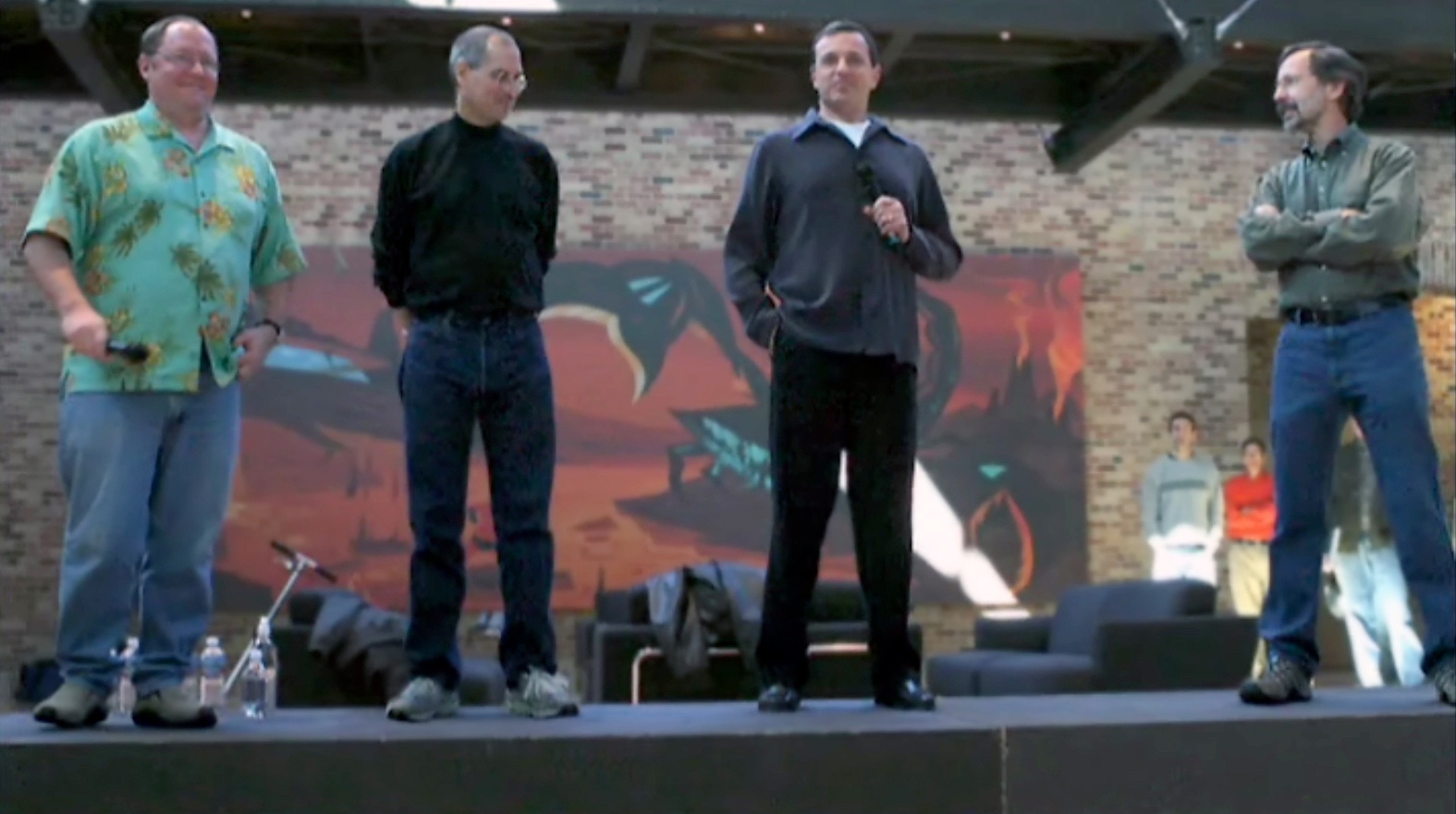
Indeed, just a couple months later, on January 24, 2006, Disney announced its friendly acquisition of Pixar, at $7.4 billion (mostly in stock). Jobs became a Disney board member and its largest individual shareholder, owning 7% of the company's stock —ironically, this is by far what contributed to most of his wealth, not his Apple stock. Pixar executives Ed Catmull and John Lasseter were also both given leadership roles in the new combined animation studio. In many ways, it was as if Pixar had taken over Disney animation —a reverse acquisition reminiscent of NeXT taking over Apple after the 1996 merger.
Momentum
Meanwhile, Apple was seeing unprecedented success in all its businesses, not only iPod and iTunes. The retail stores were hugely popular, and a milestone was reached when Steve Jobs inaugurated the impressive 5th Avenue store in Manhattan, a glass cube facing Central Park. As for the Mac, it was gaining momentum on the market, benefiting from both the aura of the iPod, and the switch to Intel processors.
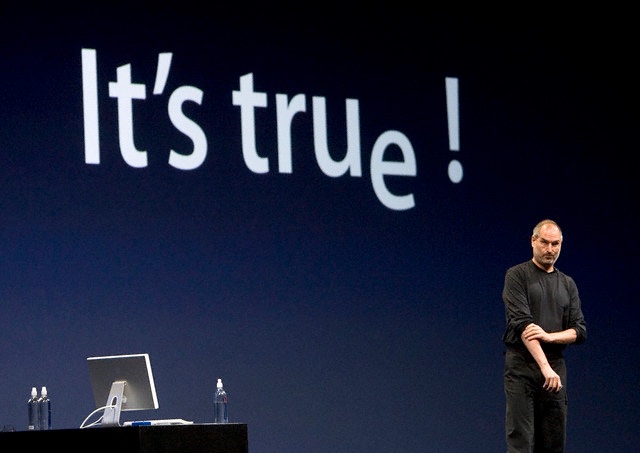
Indeed, at WWDC in June 2005,, Jobs made a surprise announcement that after over a decade on the PowerPC microprocessor architecture, Apple would start using more power-efficient Intel chips in its Macs. In the late 1990s, Apple had run several ads to make fun of Intel's Pentium processors. As a matter of fact, the expression 'Wintel machines' (Windows + Intel) was often used to describe PCs. That move to Intel was thus pretty bold, but in the long run turned out to be another wise decision. Not only did it make Macs more competitive and efficient, paving the way for the super slim (and super successful) MacBook Air notebooks —it also opened up a whole new set of customers to Apple, as Intel Macs could run both Mac OS X and Windows. The Mac became the platform of choice for an ever larger number of software developers. Less than a year after the announcement, all new Macs were running Intel. The transition was a complete success.
Apple Inc.
iPod made Steve Jobs realize that Apple could become the greatest consumer electronics company on the planet. Around 2003, he started a secret project to develop a computer tablet. But in 2004-2005, he realized that the technology that had been developed for this tablet —including a revolutionary touch-screen technology— could also be used in a mobile phone, which was even more appealing. After two more years of development, iPhone was introduced at Macworld on January 9, 2007. This keynote is often considered the pinnacle of Steve Jobs' career.
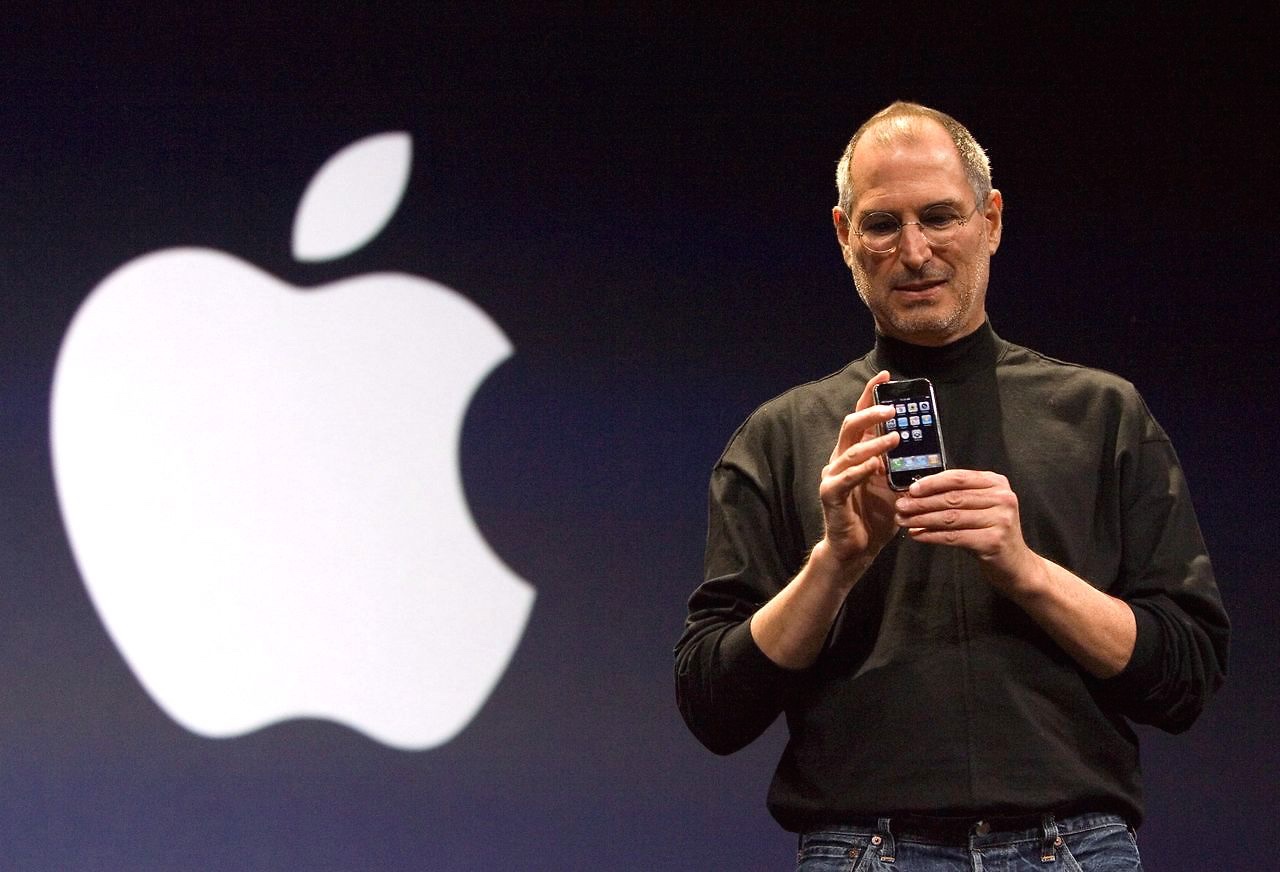
iPhone was not only a breakthrough digital convergence device ("an iPod, a phone, and an Internet communicator" all in one), it was also a force of disruption for the traditional phone business. Just like for the iTunes Store, Steve Jobs had negotiated a landmark deal with wireless carrier AT&T before he introduced iPhone —without ever showing them a prototype! In exchange for exclusivity, the carrier would pay Apple a share of all their iPhone subscription revenues. And of course, AT&T could not put any software on the iPhone, and no logo either. This was an inversion of the traditional master-slave relationship that carriers entertained with phone manufacturers (OEMs). In the long run, it really turned the phone industry upside down.
Unlike iPod, all of Apple understood that iPhone, if successful, could become a world-changing device and redefine their company. Thus, at the end of the iPhone introduction, Steve Jobs also announced that the company's name would change from Apple Computer Inc. to Apple Inc. Macs still mattered, but they now accounted for a minority of Apple's revenues, and this trend was not about to be reversed. They was a highly symbolic moment in the company's history.
The original iPhone was quite successful: despite its $399 price tag, Apple sold 6 million of them during its lifetime. But sales really started to skyrocket in 2008, after Apple introduced the cheaper iPhone 3G (at a subsidized $199 price) and the App Store. Just like the Windows-compatible iPod, Steve Jobs was originally opposed to letting third-party software on the iPhone. But the demand was so high that he eventually relented, and introduced the iPhone SDK and the App Store in March 2008.
It is impossible to overestimate the impact of the iPhone's App Store, which ushered in a new era in mobile software. Thousands of developers started writing apps for the iPhone platform, which became a competitive advantage for Apple. Apple proudly showed off this rich choice of software in its TV ad campaign 'There's an app for that', which ran for over two years.
Health concerns
Unfortunately, while he had never been so successful professionally, Steve Jobs had to start ighting cancer with renewed intensity.
In late 2003, he had been diagnosed with pancreatic cancer of a rare kind, that could potentially be cured by surgery. However, against everyone's advice, he refused to have the surgery for nine long months. Instead, true to the ideals of his youth, he tried alternative diets and treatments, including acupuncture and seeing a psychic. Only in July 2004 did he agree to have the surgery. He looked healthy for the next five years, and spoke publicly of being 'cured' of cancer at his famous Stanford commencement speech in 2005.
Yet at the WWDC keynote in June 2008, few observers failed to notice how thin he appeared on stage, and concerns about his health started popping up again. They became increasingly frequent until December 2008, when Apple made a shocking announcement that Jobs would not be the keynote speaker at Macworld 2009, and that he was taking a medical leave of absence for six months. Although he (and Apple) publicly denied it, the truth was that his cancer had come back. He was actually weeks away from death when he received a liver transplant, in April 2009. He came back to Apple in late summer 2009, healthier though still very frail in appearance. He was eager to bring the finishing touches to a new project very dear to his heart.
Ushering in the Post-PC era
The iPhone had spun off the idea for a tablet device back in 2005, and it was time to restart that project, which of course became the iPad. Although some speculated it would run Mac OS X, it was decided that iPad would in fact run the same operating system as iPhone, now called iOS. It would therefore benefit from the rich variety of apps already present in the iPhone App Store.
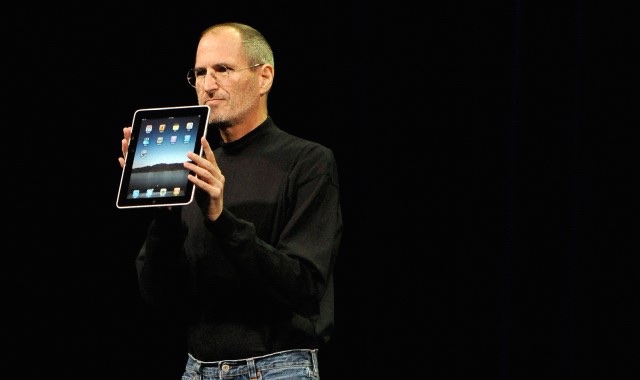
Although iPad was welcomed by mixed reviews when it was introduced in January 2010 (some dubbed it a "larger iPod touch"), it was always clear to Steve Jobs that it was 'the biggest thing [he'd] ever done' —the ultimate post-PC device, an eventual replacement of PCs for the average user. He laid out his vision clearly at the D8 conference in June 2010, where he compared PCs to trucks and iPads to cars. This perspective on iPad was reiterated in a series of TV commercials where the narrator, the 'Apple voice', explained how revolutionary iPad was, and how the revolution had 'only just begun'.
Unfortunately, Steve Jobs' health, which had seemed to recover throughout 2010, started declining again. In January 2011, he announced he was taking a new medical leave of absence, this time without saying when it would end. Everybody started talking about his upcoming departure. However, he deemed iPad and iOS so important that he still made two major public presentations at Apple events. The first one was the introduction of iPad 2 in March 2011, and the second one was WWDC, in June 2011, where he introduced iCloud.
In many ways, the iCloud announcement was of similar importance as the Digital Hub Strategy introduction ten years before. It was not only a product, but a master plan to get consumers to adopt iOS devices and lock them into the Apple ecosystem. The 2011 iCloud, which allowed users to sync email, documents, and media across their Macs and iDevices, was only the first step in that direction. It was crucial to Steve Jobs, who clearly considered iOS to be the most important of Apple's businesses, and the key to its future success.
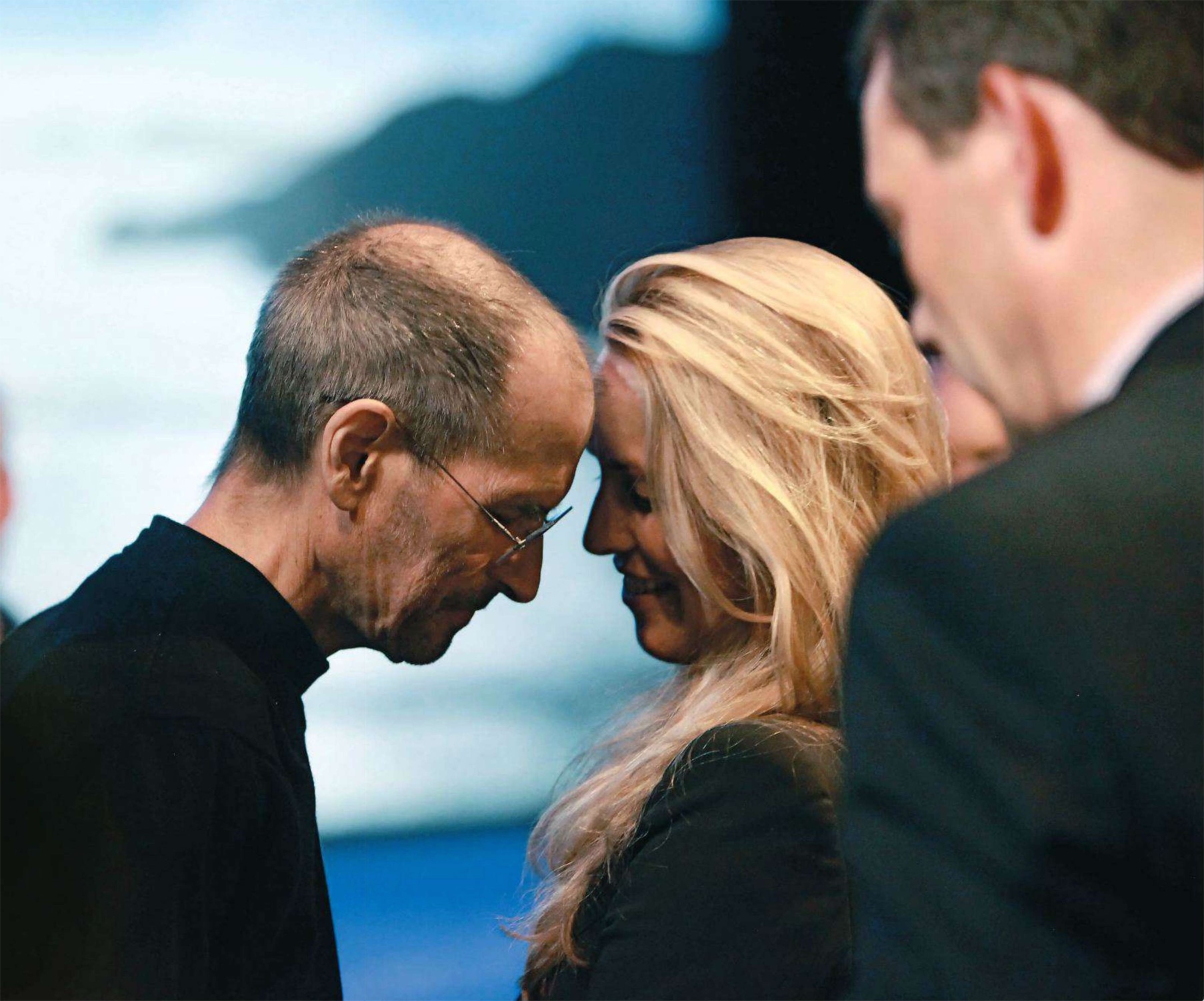
Building his legacy
The resurgence of Steve's cancer was a painful reminder that it was time to 'put his affairs in order' before his passing —and he did.
First, he made sure that Apple was ready to operate without him. In late 2008, he hired the dean of the Yale School of Management to create 'Apple University', a sort of internal business track to groom future Apple executives by exposing them to the Apple ways, through case studies of the history of the company. He also consolidated his executive team and agreed with the board that his natural successor would be his second in command, COO Tim Cook. Finally, at his last public appearance in June 2011, he unveiled his plans for the future Apple campus in Cupertino (now Apple Park), a huge spaceship-sized building in the shape of a circle. All of this was in place when he eventually resigned as Apple CEO on August 24, 2011.
Jobs also prepared his personal legacy. In 2009, he started giving interviews to writer Walter Isaacson to prepare for his first and only authorized biography, sharing with him his perspective on his life and career. He also spent his last days designing a yacht for his family on which he hoped to travel the world. Unfortunately, death took him too soon, and he died peacefully at home on October 5, 2011, surrounded by his family —the day following the introduction of the iPhone 4S, an Apple event that he most likely watched from his deathbed.





